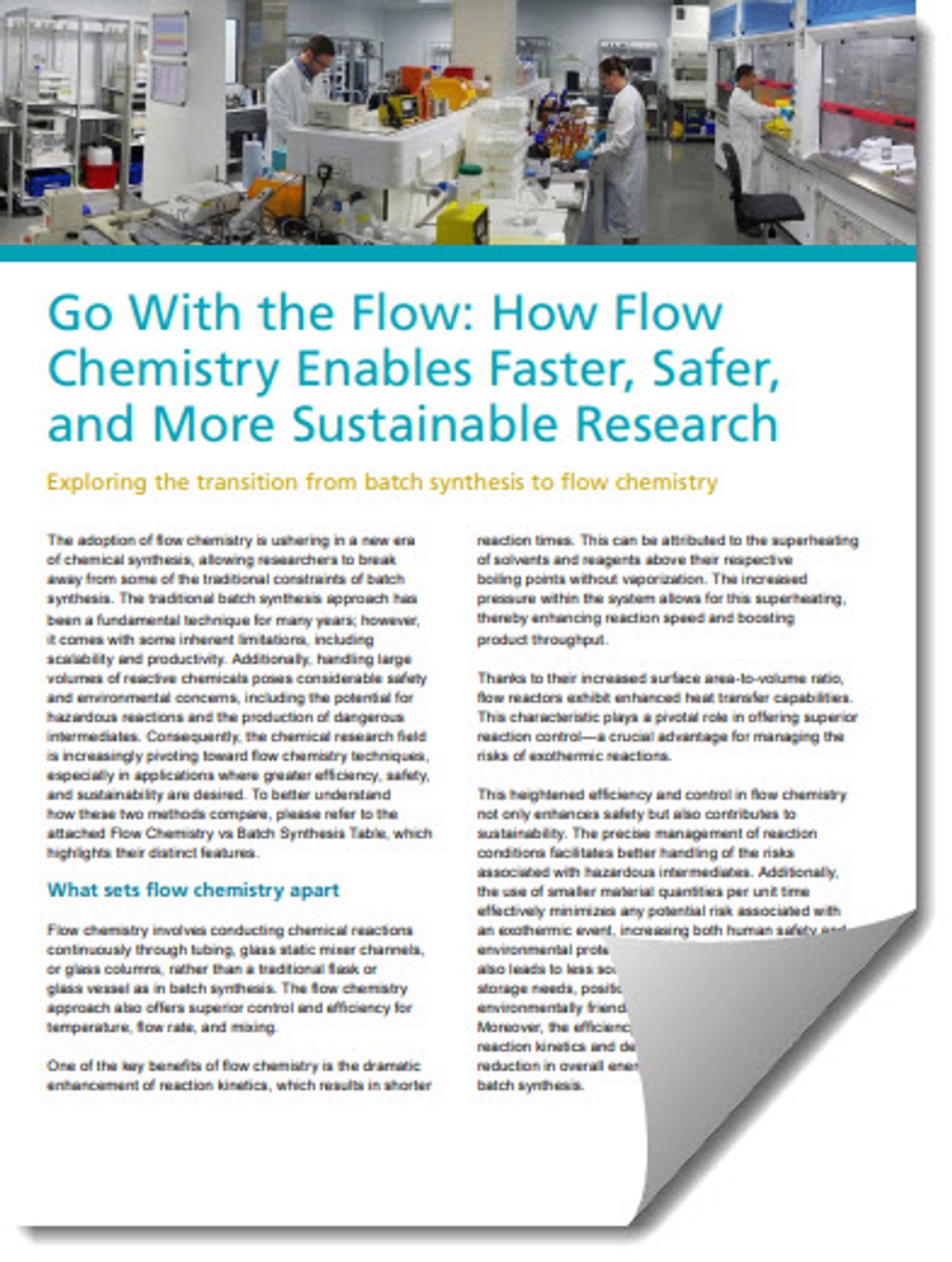For many chemists, batch synthesis is a fundamental technique. However, it has inherent limitations, including scalability, productivity, and safety and environmental concerns. Consequently, many researchers are moving over to flow chemistry techniques, especially in applications where greater efficiency, safety, and sustainability are desired.

Flow chemistry offers many benefits that address the limitations of traditional methods. For example, it can dramatically enhance reaction kinetics, which reduces reaction times. This shift to flow chemistry is more than a technical upgrade; it is a strategic move towards more productive, safer, and greener labs.
This article offers an in-depth exploration of the benefits of flow chemistry and the transition from batch synthesis to flow chemistry. It also touches on the economic considerations—how flow chemistry can lead to cost savings while freeing up capacity for additional production and revenue streams. A highlight of this resource is the inclusion of a table comparing batch synthesis with flow chemistry. This table serves as a reference to help chemists easily compare the two methods, aiding in informed decision-making.
In this article, you will discover:
- A detailed comparison of batch synthesis and flow chemistry
- Discussions on enhanced safety features inherent in flow chemistry systems
- Important factors to consider when transitioning to flow chemistry
